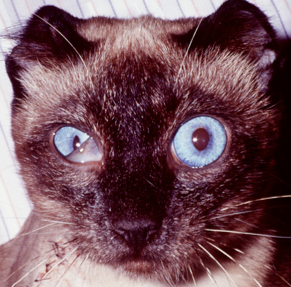What is Horner's Syndrome?
Horner's Syndrome is a condition that occurs when certain muscles of the face and eye lose stimulation by nerves from the sympathetic nervous system.
Causes
Horner's Syndrome is caused by damage or injury to nerves that are part of the sympathetic nervous system. The problem may arise at the level of the brain, spinal cord, chest or face.
The most common causes are:
Signs of Horner's Syndrome
Signs of Horner's Syndrome occur due to loss of muscle tone and nerve stimulation. The signs occur on the same side as the injury to the nerve, and include:

Confirming the Diagnosis
Horner's Syndrome is diagnosed based on the signs seen during an examination.
Determining the underlying cause of the problem requires additional testing. Diagnostics include:
Administration of eye drops that can stimulate the nerve endings (e.g. epinephrine) may assist in localizing the site of the injury. A series of drops are applied to the eye and examination is performed at various time intervals monitoring for a change in the size of the pupil and position of the third eyelid. When the injury to the nerves is outside of the brain and spinal cord, the epinephrine will cause the pupil to dilate within 20 minutes of administration. If the lesion is in the brain or spinal cord, the pupil generally does not dilate until 30 to 40 minutes after the epinephrine is applied.
Treatment
Depending on the location of the injury, phenylephrine eye drops can be given to alleviate the clinical signs, though it does not treat the underlying cause. Horner's Syndrome in itself is not painful. Retraction of the eye may result in some superficial irritation which can be managed with topical medications and lubricants.
The underlying cause, if determined, should be addressed. In cases where the cause is undetermined (idiopathic Horner's Syndrome), there is no specific treatment. These cases often run their course and resolve after 6 to 8 weeks.